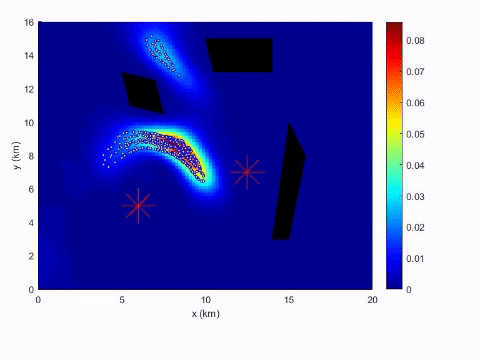
NSF ATD-1738010

September 1, 2017 – October 31, 2020 $400,000
NSF
Aerospace Division of Mathematical Sciences, Algorithm for Threat Detection (ATD) Program
PI:
A. Vladimirsky
Co-PI:
S. Ferrari
Project Description
This project seeks to use tools from optimal control theory to design efficient methods for two such models:
- Civilians in dangerous environments (e.g., war zones) will primarily plan their paths to minimize the threat exposure.
- Adversaries aware of the existing monitoring measures will plan their paths to evade the observation.
Research Goals
- The forward problem: How will people plan their paths given the full information about the environment?
- The inverse problem: Given sparse information about their route choices or travel times, how can we infer beliefs about the environment?
- The adversarial problem: What should people do to optimize their cost under uncertainty about the location of threats or observers? How might the environment change in response to their choice?
Peer-Reviewed Publications
- J. Morelli, P. Zhu, B. Doerr, R. Linares, S. Ferrari “Integrated Gas Distribution Mapping and Path Planning for Very Large-Scale Robotic (VLSR) Systems,” Sensors, submitted.
- J. Morelli, P. Zhu, B. Doerr, R. Linares, S. Ferrari “Integrated Mapping and Path Planning for Very Large-Scale Robotic (VLSR) Systems,” ICRA, submitted.
- B. Doerr, R. Linares, P. Zhu, S. Ferrari “Random Finite Set Theory and Optimal Control for Large Spacecraft Systems”, AIAA.
Presentations
- “Time-dependent Surveillance-evasion Games,” Research Experience for Undergraduates (REU), Cornell, July 25, 2018. [PDF]
